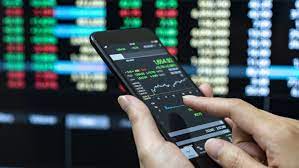
Algorithmic Trading: The Future of Online Trading
In the ever-evolving world of online trading, one of the most transformative trends to emerge in recent years is algorithmic trading. Also known as algo trading or automated trading, this technology-driven approach to trading is changing the way financial markets operate and is increasingly becoming the future of online trading.
What is Algorithmic Trading?
Algorithmic trading is a strategy that utilizes computer programs and algorithms to execute trading orders automatically. These algorithms are designed to analyze market data, identify patterns, and execute trades at high speeds and with precision. Algorithmic trading can be applied to a wide range of assets, including stocks, cryptocurrencies, forex, and commodities.
Key Features of Algorithmic Trading:
Speed and Efficiency: Algo trading systems can execute orders in a matter of milliseconds, far faster than any human trader. This speed is crucial for taking advantage of fleeting market opportunities.
Data-Driven Decision-Making: Algorithms are designed to analyze vast amounts of data in real-time, making them capable of identifying market trends and anomalies that may be missed by human traders.
Risk Management: Algorithmic trading systems are programmed to adhere to risk management parameters, helping traders avoid excessive losses and reduce human emotions from decision-making.
24/7 Trading: Unlike human traders who need rest, algorithmic trading systems can operate 24/7, allowing for continuous market monitoring and execution.
Backtesting and Optimization: Traders can backtest their algorithms on historical data to refine and optimize their strategies, ensuring that they perform effectively in various market conditions.
The Growing Popularity of Algorithmic Trading:
Algorithmic trading has gained immense popularity in recent years, particularly among institutional investors and hedge funds. These sophisticated traders are increasingly relying on algorithms to execute complex strategies, such as high-frequency trading and quantitative analysis. However, algo trading is also becoming accessible to retail traders through user-friendly platforms and APIs.
Challenges and Risks:
While algorithmic trading offers numerous advantages, it is not without challenges. Issues related to algorithmic errors, cybersecurity threats, and the potential for unintended market disruptions require careful consideration and ongoing risk management.
The Future of Online Trading:
As technology continues to advance, the influence of algorithmic trading is expected to grow. We can anticipate the integration of artificial intelligence and machine learning to further enhance the predictive power of algorithms. Additionally, blockchain technology and cryptocurrencies are creating new opportunities for algorithmic trading, with the potential for more diverse asset classes and trading strategies.
In conclusion, algorithmic trading represents a significant shift in the landscape of online trading. Its speed, efficiency, and data-driven decision-making make it a powerful tool for traders. As technology evolves and more traders adopt algorithmic approaches, it is likely that algo trading will continue to shape the future of online trading, providing opportunities for both institutional and retail investors to stay competitive in increasingly complex and fast-paced markets.